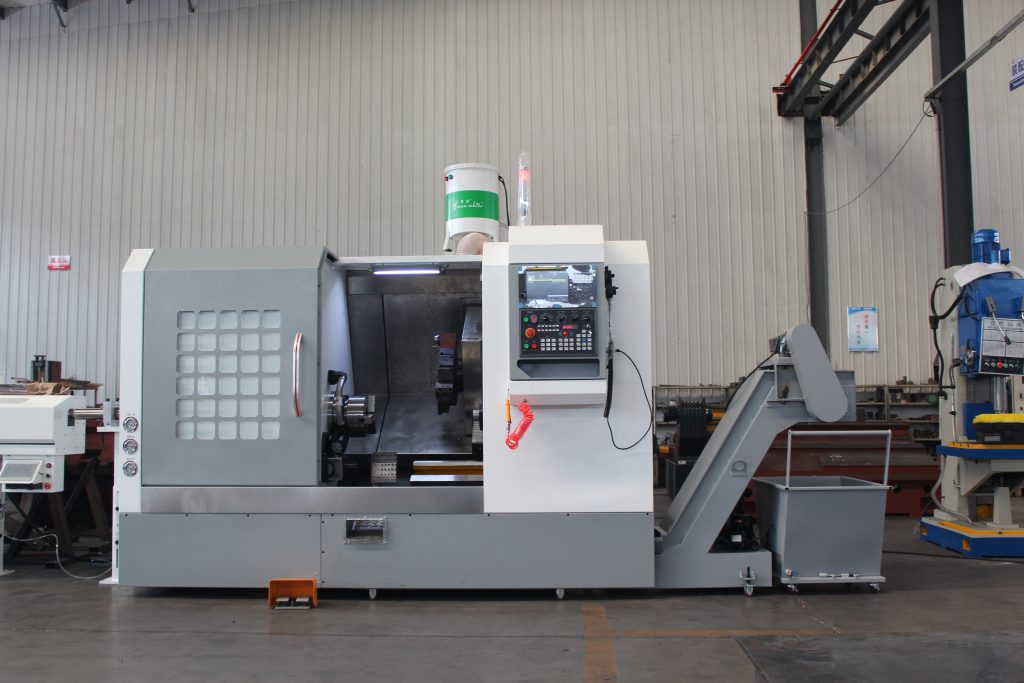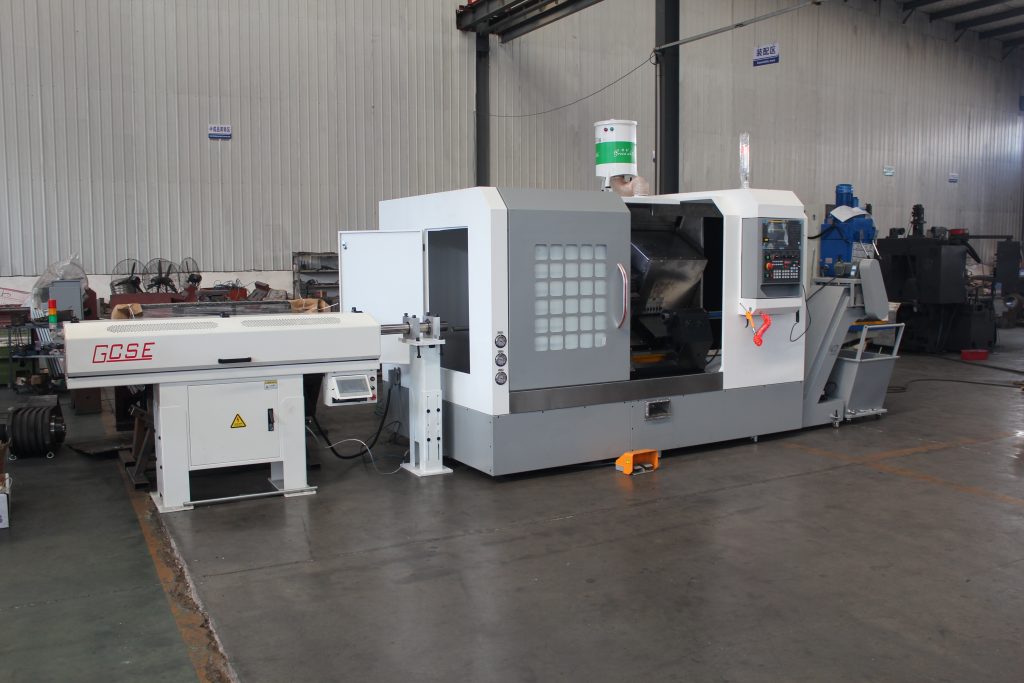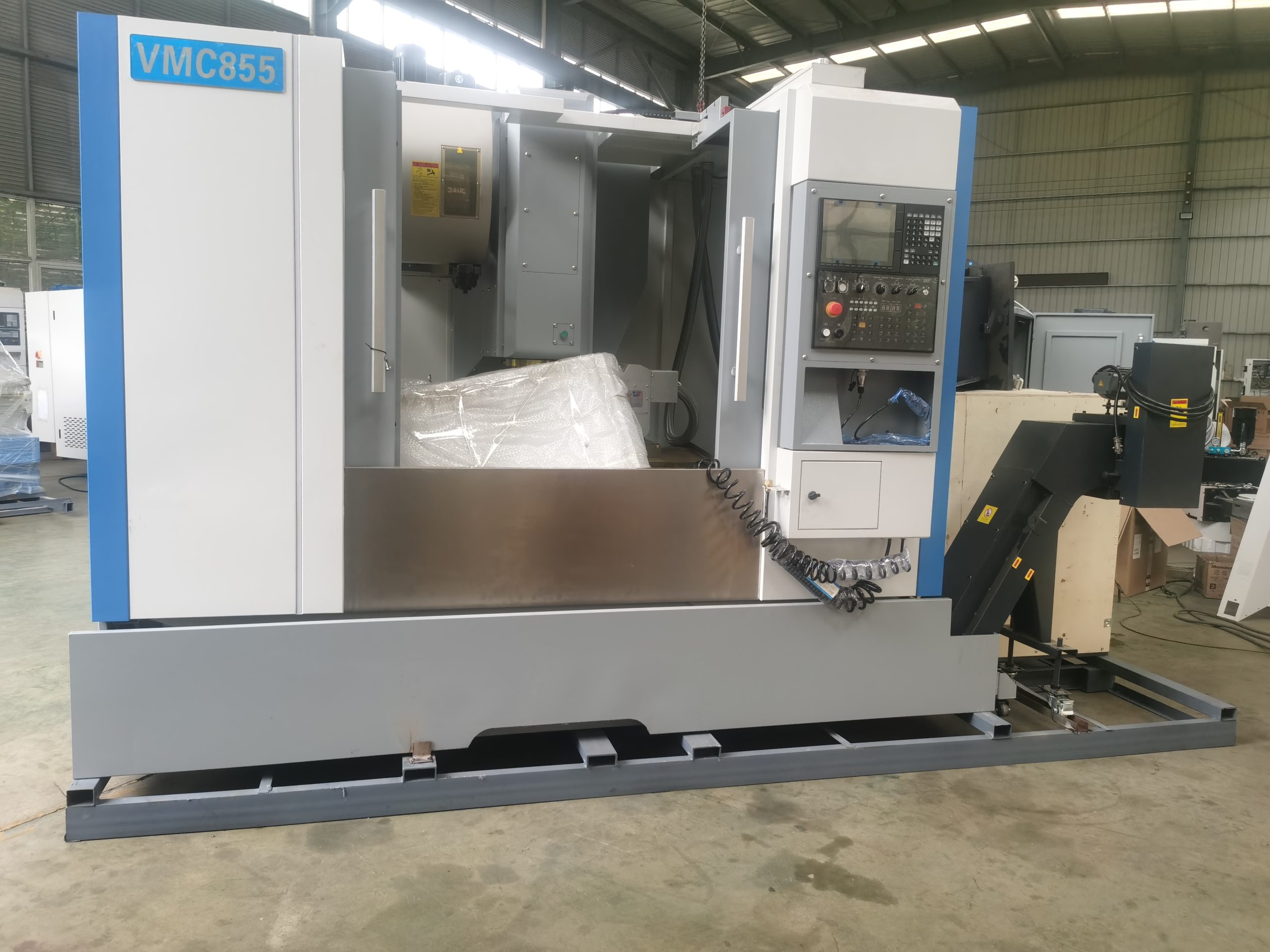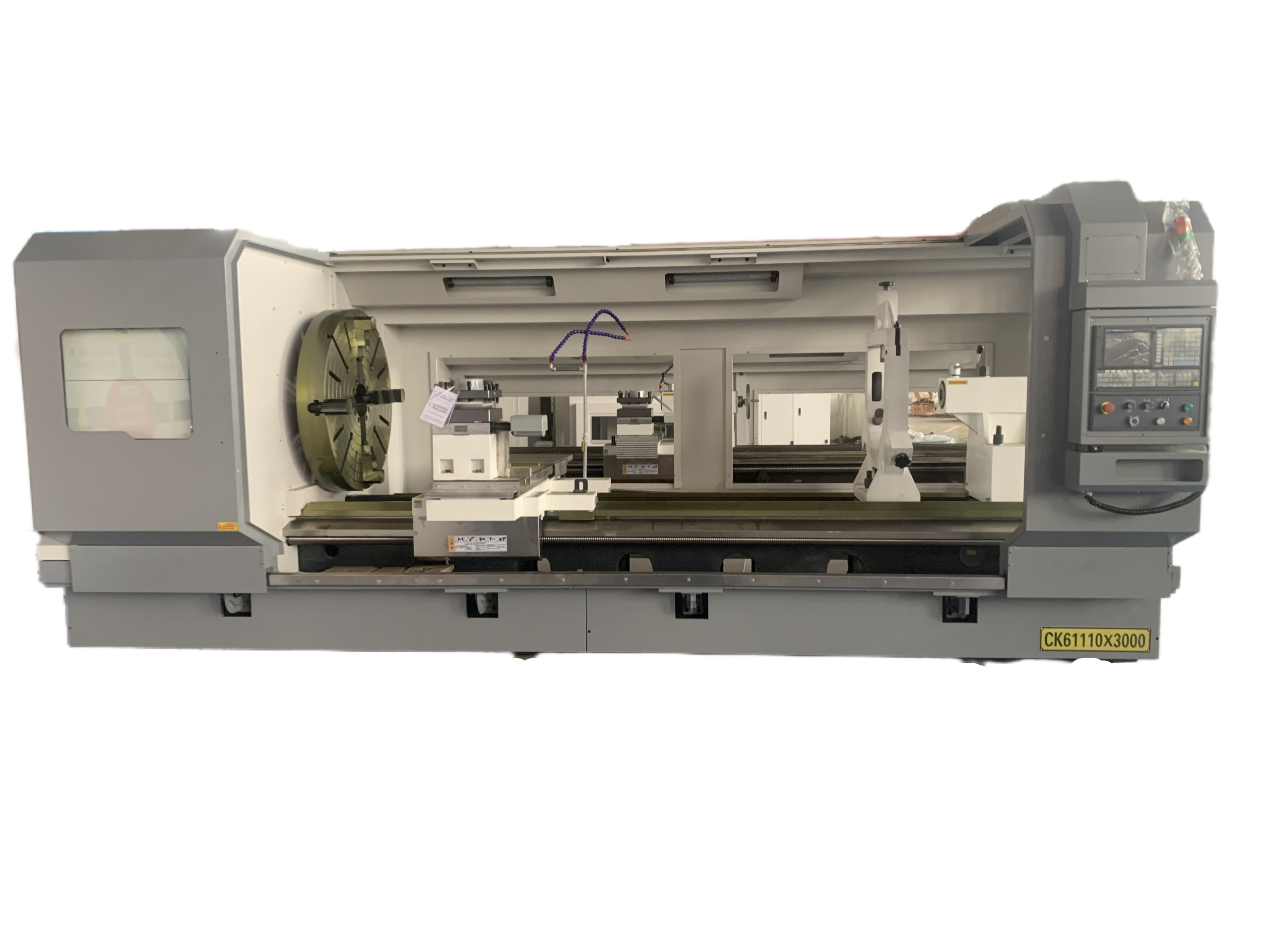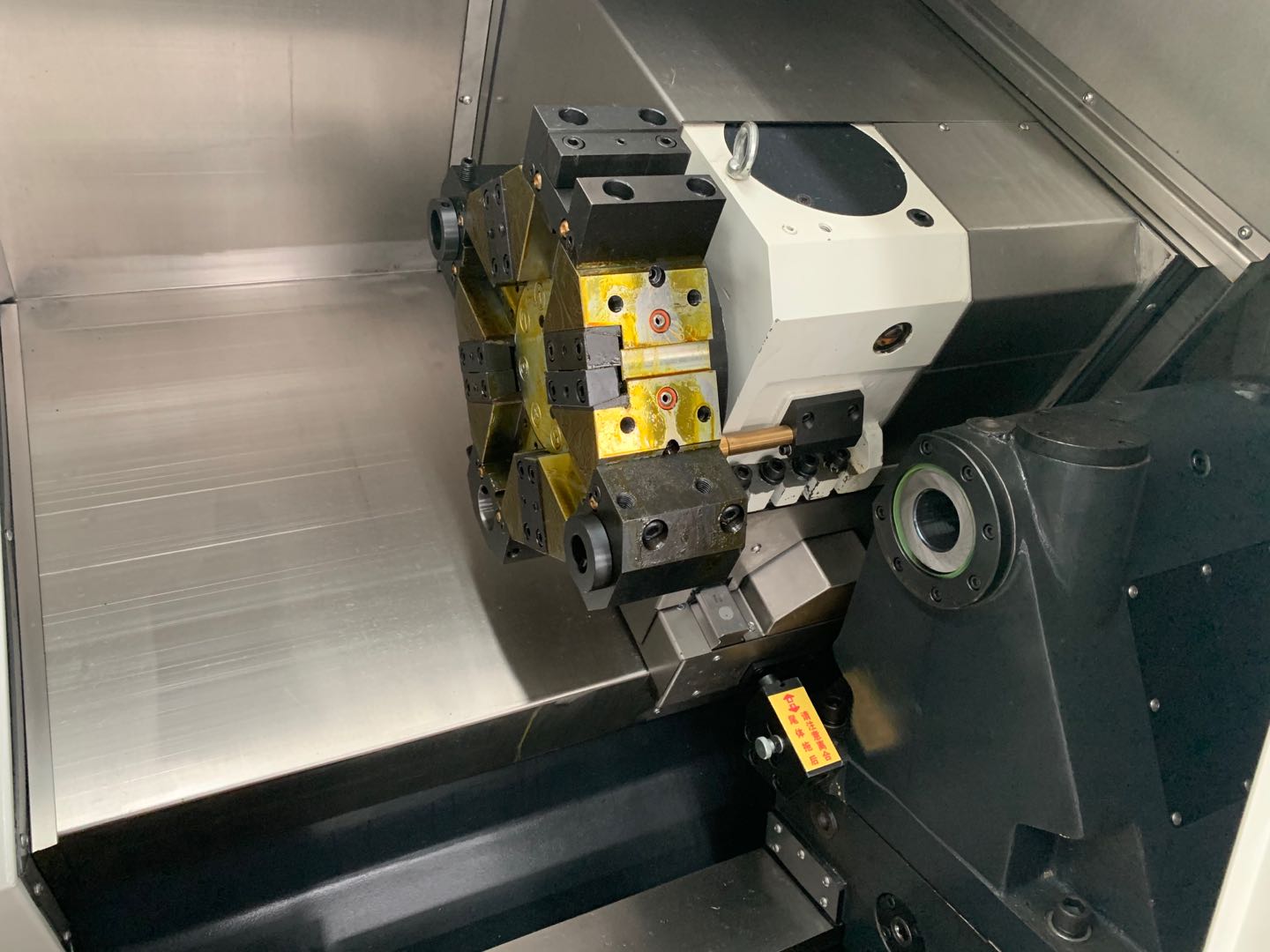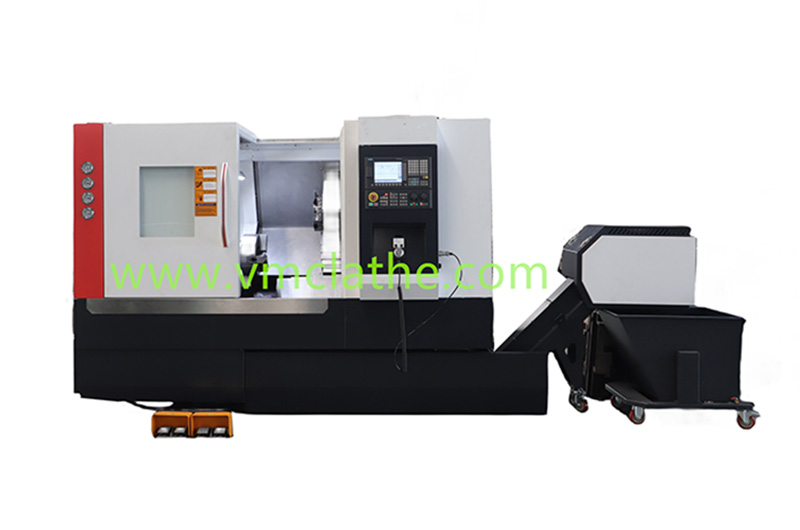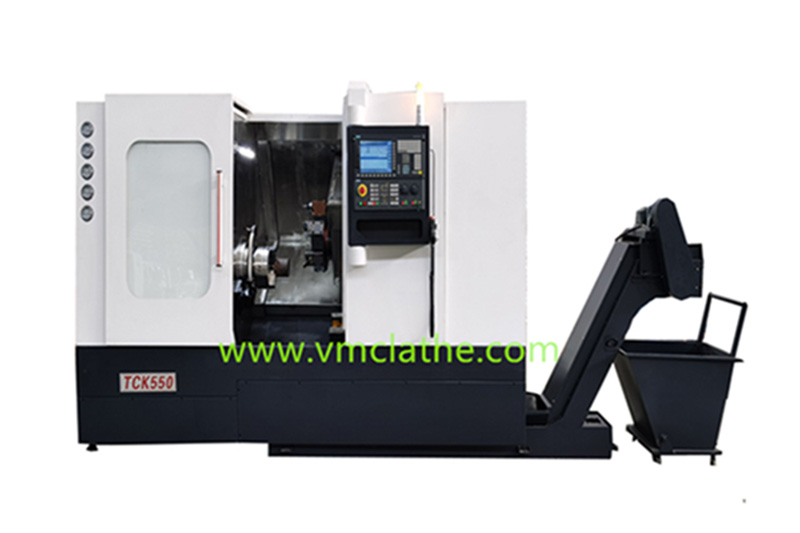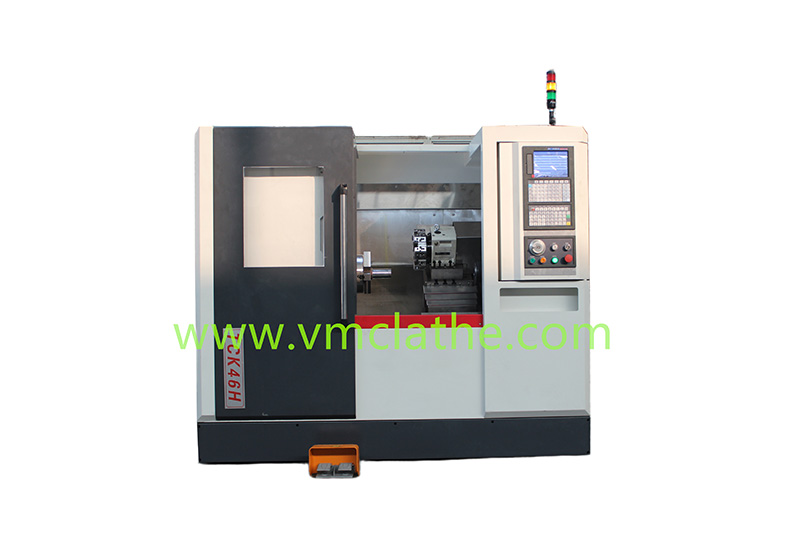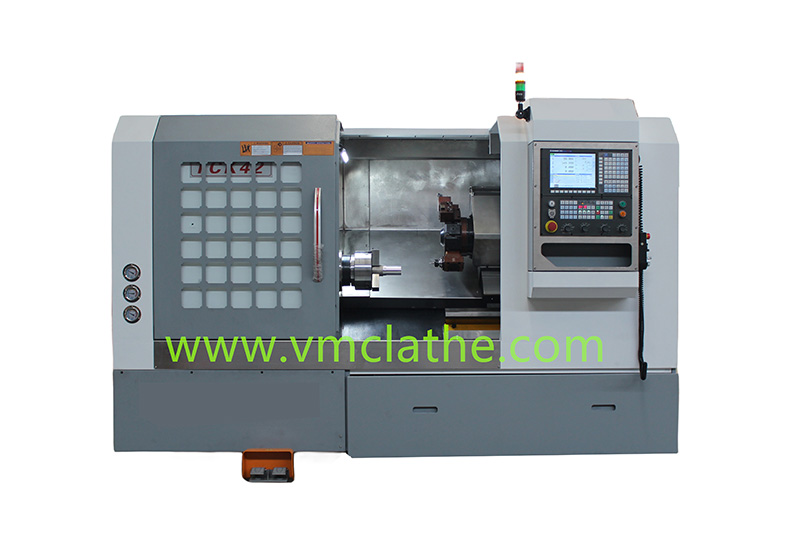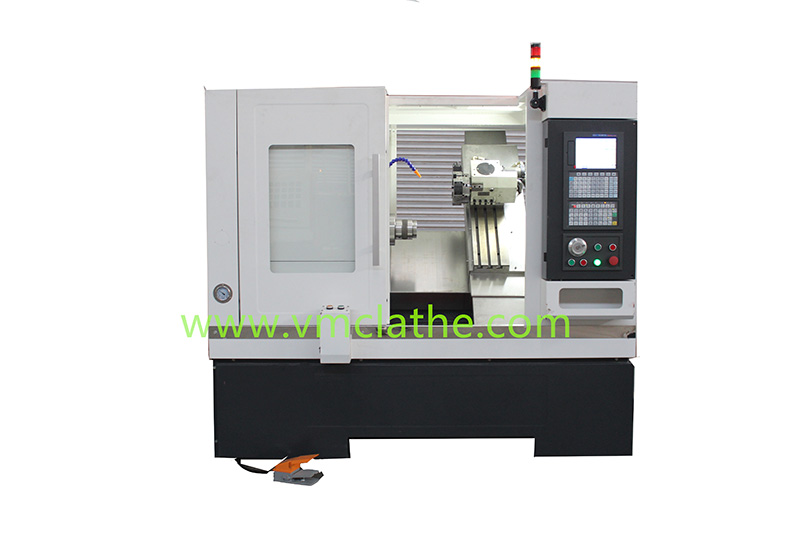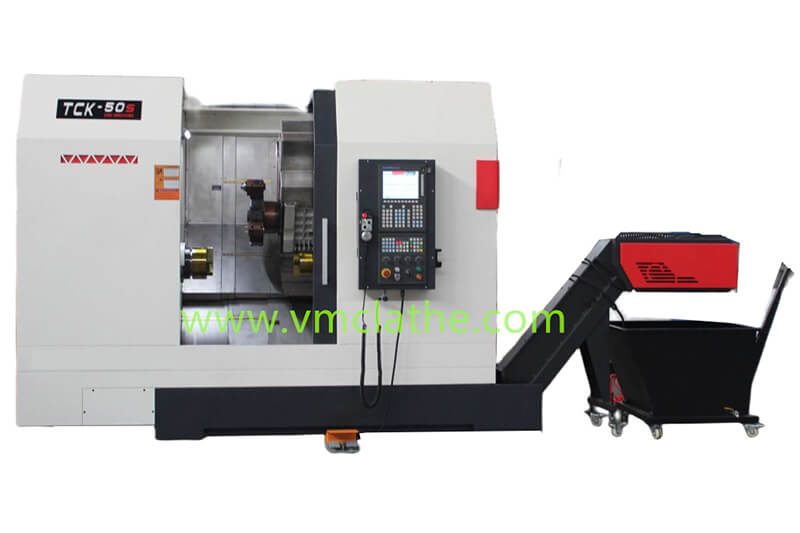The five key factors in purchasing a CNC lathe with an inclined bed are as follows:
Processing requirement matching
A. Part type: Make it clear whether the parts to be processed are shafts, discs or other complex shapes. If there are many shaft parts to be processed, it is necessary to pay attention to whether the spindle through-hole diameter, chuck specifications, etc. can meet the clamping requirements; if complex curved surface parts are processed, the number of linkage axes and interpolation functions of the machine tool are required to be higher.
B. Accuracy requirements: Select a lathe with the corresponding accuracy level according to the product accuracy requirements. For example, high-precision mold processing may require the positioning accuracy and repeat positioning accuracy of the machine tool to reach the micron level, while general mechanical parts processing has relatively low accuracy requirements1.
C. Materials and batches: The hardness and toughness of the processed materials are different, and the cutting force and tool system requirements of the lathe are also different. Large-batch production requires the lathe to have higher stability and production efficiency, and automatic loading and unloading devices can be considered.
Machine tool structure and performance
A. Bed and guide rails: The bed material is mostly cast iron, which has good rigidity and vibration absorption. Guide rails are divided into hard rails and linear rails. Hard rails have a large load-bearing capacity and are suitable for heavy cutting; linear rails have a small friction coefficient, high motion accuracy, and fast response speed, and are suitable for high-speed processing.
B. Spindle system: The maximum speed, torque and accuracy of the spindle are important indicators. High speed is suitable for processing materials such as non-ferrous metals, and high torque is conducive to processing high-hardness materials. The accuracy of the spindle directly affects the roundness and other indicators of the processed parts.
C. Turret system: The number of turret stations, tool change speed and positioning accuracy are the key. Multi-station turrets can reduce tool change time and improve processing efficiency; fast tool change function can shorten auxiliary processing time; high positioning accuracy can ensure the position accuracy of the tool after replacement, thereby ensuring processing accuracy.
D. Servo system: The performance of the servo motor and driver determines the feed accuracy and response speed of the machine tool. High-precision, high-response servo systems can ensure the accuracy and stability of machine tools when moving at high speeds and processing complex contours.
Functions of CNC systems
A. Brand and compatibility: CNC systems of well-known brands such as FANUC and Siemens have stable performance, powerful functions, and user-friendly operation interfaces, but they are relatively expensive. You can also choose some domestically produced high-quality CNC systems, which are relatively cost-effective. At the same time, the compatibility of the CNC system with other parts of the machine tool should be considered.
B. Control function: Check whether the CNC system has the required control functions, such as basic functions such as linear interpolation, circular interpolation, and helical interpolation, as well as auxiliary functions such as tool radius compensation, length compensation, and coordinate system conversion. For complex parts processing, it is also necessary to pay attention to whether there are functions such as macro programs and multi-axis linkage control.
C. Convenience of operation and programming: CNC systems with simple and intuitive operation interfaces and easy operation can reduce the learning cost of operators and improve work efficiency. Whether the programming methods are rich, such as supporting manual programming and automatic programming software import, also affects the convenience of use.
Brand and after-sales service
A. Brand reputation: Choose a brand with good reputation and market credibility. Well-known brands are usually more guaranteed in terms of product quality, technology research and development, production process, etc., and the product stability and reliability are higher.
B. After-sales service: A complete after-sales service system is crucial, including equipment installation and commissioning, operator training, free maintenance during the warranty period, spare parts supply, and timely technical support. Understand the manufacturer’s after-sales service response time and service quality to ensure that it can be solved in time when the equipment fails3.
Price and cost-effectiveness
A. Budget planning: According to the company’s financial situation and production needs, formulate a reasonable budget range. Choose the lathe with the most suitable performance and configuration within the budget, avoid blindly pursuing high configuration and exceeding the budget, or choose equipment that cannot meet production needs due to too low a budget.
B. Cost-effectiveness analysis: Perform cost-effectiveness analysis on slant bed CNC lathes of different brands and models, comprehensively consider factors such as the price, performance, precision, reliability, and after-sales service of the equipment, and evaluate whether each equipment can bring the greatest value and benefits to the enterprise.

